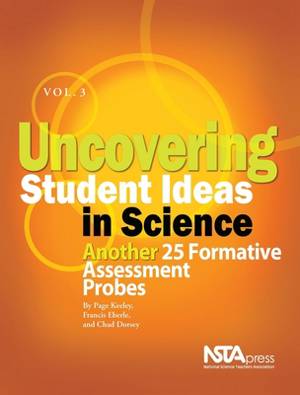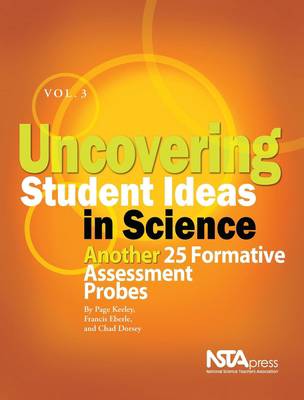
- Afhalen na 1 uur in een winkel met voorraad
- Gratis thuislevering in België vanaf € 30
- Ruim aanbod met 7 miljoen producten
- Afhalen na 1 uur in een winkel met voorraad
- Gratis thuislevering in België vanaf € 30
- Ruim aanbod met 7 miljoen producten
Zoeken
Uncovering Student Ideas in Science, Volume 3
Another 25 Formative Assessment Probes
Page Keeley, Francis Eberle, Chad Dorsey
€ 47,45
+ 94 punten
Omschrijving
Because you demanded it! Since publication of Volume 1 of this series, thousands of teachers are using these innovative classroom tools to improve student learning in science. Following in the footsteps of earlier volumes in the Uncovering Student Ideas in Science series, this all-new book provides short, easy-to-administer probes that determine what misconceptions students bring to the classroom about the nature of science and about physical, life, Earth, and space sciences. This new volume in our bestselling series provides more topic areas for classroom use as well as guidance on how teachers can use the probes for their own learning. As outlined in previous volumes, teachers--like their students--can have misconceptions that come to the fore when administering the probes. Volume 3 provides 10 detailed suggestions for teachers on how to use the probes to uncover, accurately assess, and correct their own preconceptions as well as their students' (e.g., do the probes yourself, examine student responses with other teachers, embed the probes into existing professional development programs, select specific areas to focus on, examine student thinking across grade spans, categorize ideas, and crunch data to create classroom profiles). Volume 3 offers five life science probes, seven Earth and space science probes, ten physical science probes, and three nature of science probes. This volume is an invaluable resource for classroom teachers, preservice teachers, professional developers, and college science and preservice faculty.
Specificaties
Betrokkenen
- Auteur(s):
- Uitgeverij:
Inhoud
- Aantal bladzijden:
- 198
- Taal:
- Engels
- Reeks:
Eigenschappen
- Productcode (EAN):
- 9781933531243
- Verschijningsdatum:
- 1/04/2008
- Uitvoering:
- Paperback
- Formaat:
- Trade paperback (VS)
- Afmetingen:
- 211 mm x 272 mm
- Gewicht:
- 580 g

Alleen bij Standaard Boekhandel
+ 94 punten op je klantenkaart van Standaard Boekhandel
Beoordelingen
We publiceren alleen reviews die voldoen aan de voorwaarden voor reviews. Bekijk onze voorwaarden voor reviews.








